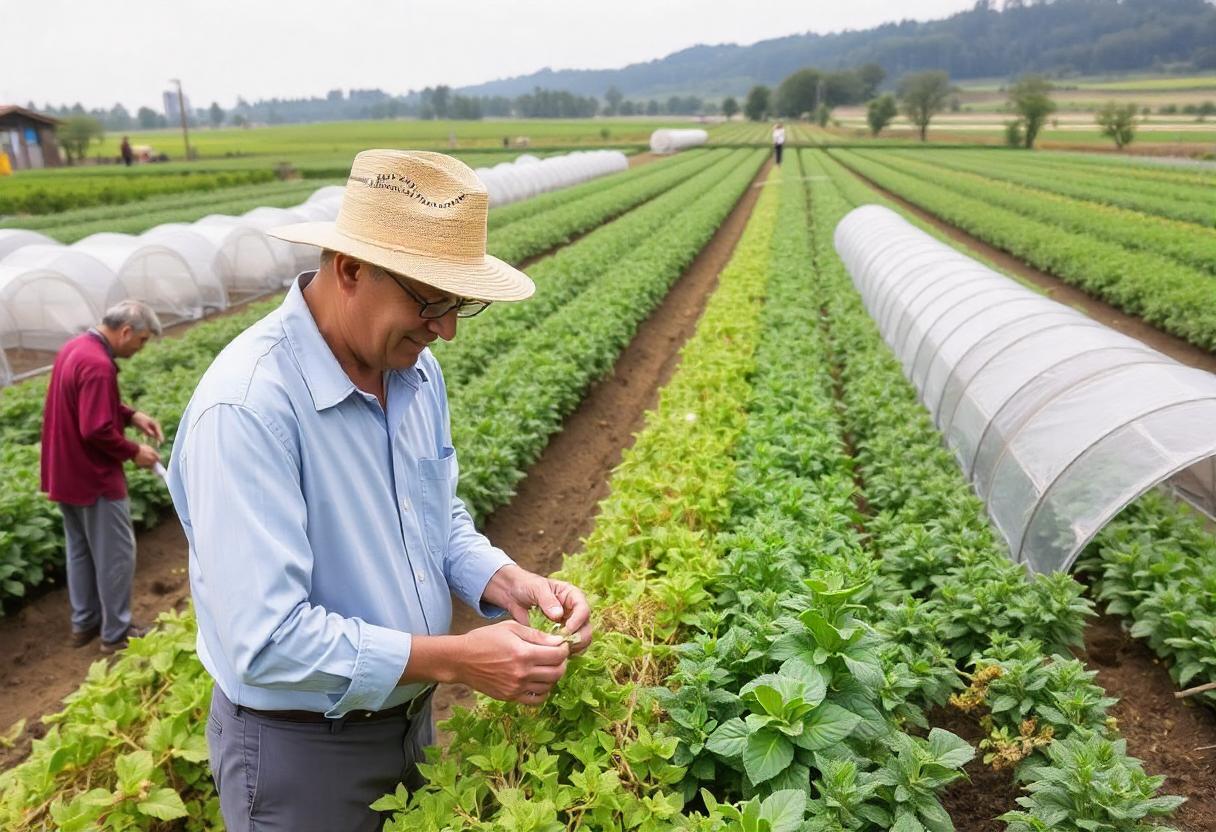
Agriculture economics is a field of study focused on the economic aspects of agriculture and its role in the broader economy. It examines how agricultural activities affect and are affected by various economic factors, including market dynamics, policy decisions, and technological innovations. Understanding agriculture economics is crucial for developing strategies to enhance productivity, ensure food security, and promote sustainable development.
Key Areas of Agriculture Economics
1. Agricultural Production and Productivity
- Production Functions: Agricultural economics analyzes production functions to understand the relationship between inputs (land, labor, capital) and outputs (crops, livestock). This helps in assessing the efficiency of resource use and the impact of technological advancements.
- Productivity Growth: Studies focus on how technological innovations, improved farming practices, and investment in research and development contribute to productivity growth in agriculture.
2. Agricultural Markets and Prices
- Market Structure: The study of market structures, including perfect competition, monopolistic competition, and oligopoly, helps understand how agricultural products are priced and marketed.
- Price Volatility: Analyzing factors that contribute to price volatility in agricultural markets, such as weather conditions, global trade policies, and supply-demand imbalances, helps in developing risk management strategies for farmers.
3. Agricultural Policy and Regulation
- Subsidies and Supports: Agricultural economics examines the impact of government subsidies, price supports, and other forms of financial assistance on farm income, market stability, and international trade.
- Trade Policies: The effects of trade agreements, tariffs, and export-import regulations on agricultural markets are analyzed to understand their implications for domestic and global agriculture.
4. Farm Management and Finance
- Farm Business Management: This area covers financial planning, budgeting, and investment decisions within farm businesses. It includes analyzing cost structures, profit margins, and financial sustainability.
- Access to Credit: Examining how access to credit and financial services impacts farm operations and investment in agricultural technology and infrastructure.
5. Environmental and Resource Economics
- Sustainable Practices: Evaluating the economic benefits and costs of sustainable agricultural practices, such as organic farming and conservation tillage, in relation to environmental preservation and resource use.
- Resource Management: Analyzing the economics of resource management, including land, water, and soil conservation, to promote efficient and sustainable use of natural resources.
6. Rural Development and Employment
- Economic Impact: Assessing the contribution of agriculture to rural economies, including employment opportunities, income generation, and community development.
- Rural-Urban Linkages: Studying how agricultural activities influence rural-urban migration patterns, infrastructure development, and overall regional economic growth.
Challenges in Agriculture Economics
1. Climate Change
- Impact on Productivity: Climate change affects agricultural productivity through shifts in temperature, precipitation patterns, and extreme weather events. Economic models assess how these changes impact crop yields and farm income.
- Adaptation Costs: Analyzing the costs and benefits of adaptation strategies, such as new crop varieties and water management techniques, to mitigate the effects of climate change.
2. Globalization and Trade
- Market Integration: The integration of global agricultural markets presents both opportunities and challenges. Economic studies examine how globalization affects local markets, competition, and trade policies.
- Trade Disputes: Addressing the economic implications of trade disputes and tariffs on agricultural exports and imports.
3. Technological Advancements
- Innovation Adoption: The adoption of new technologies, such as precision agriculture and biotechnology, has significant economic implications. Understanding the costs, benefits, and adoption rates of these innovations is crucial for policy development.
- Digitalization: Exploring the economic impact of digital technologies on agriculture, including data analytics, automation, and e-commerce platforms.
4. Food Security
- Access and Affordability: Analyzing factors affecting food security, such as income levels, food prices, and distribution systems, to ensure that populations have access to sufficient, safe, and nutritious food.
- Supply Chain Resilience: Evaluating the economic resilience of food supply chains to disruptions and developing strategies to enhance their robustness.
The Role of Agriculture Economics in Policy Making
Agriculture economics provides valuable insights for policymakers to design effective policies that support agricultural development, enhance food security, and promote environmental sustainability. By analyzing economic trends, market dynamics, and the impact of policies, agricultural economists contribute to informed decision-making and strategic planning in the agricultural sector.
Overall, agriculture economics is a critical field that helps understand the complex interactions between agriculture, markets, and the environment. It provides essential knowledge for improving agricultural practices, shaping policies, and addressing the challenges faced by the agricultural industry.